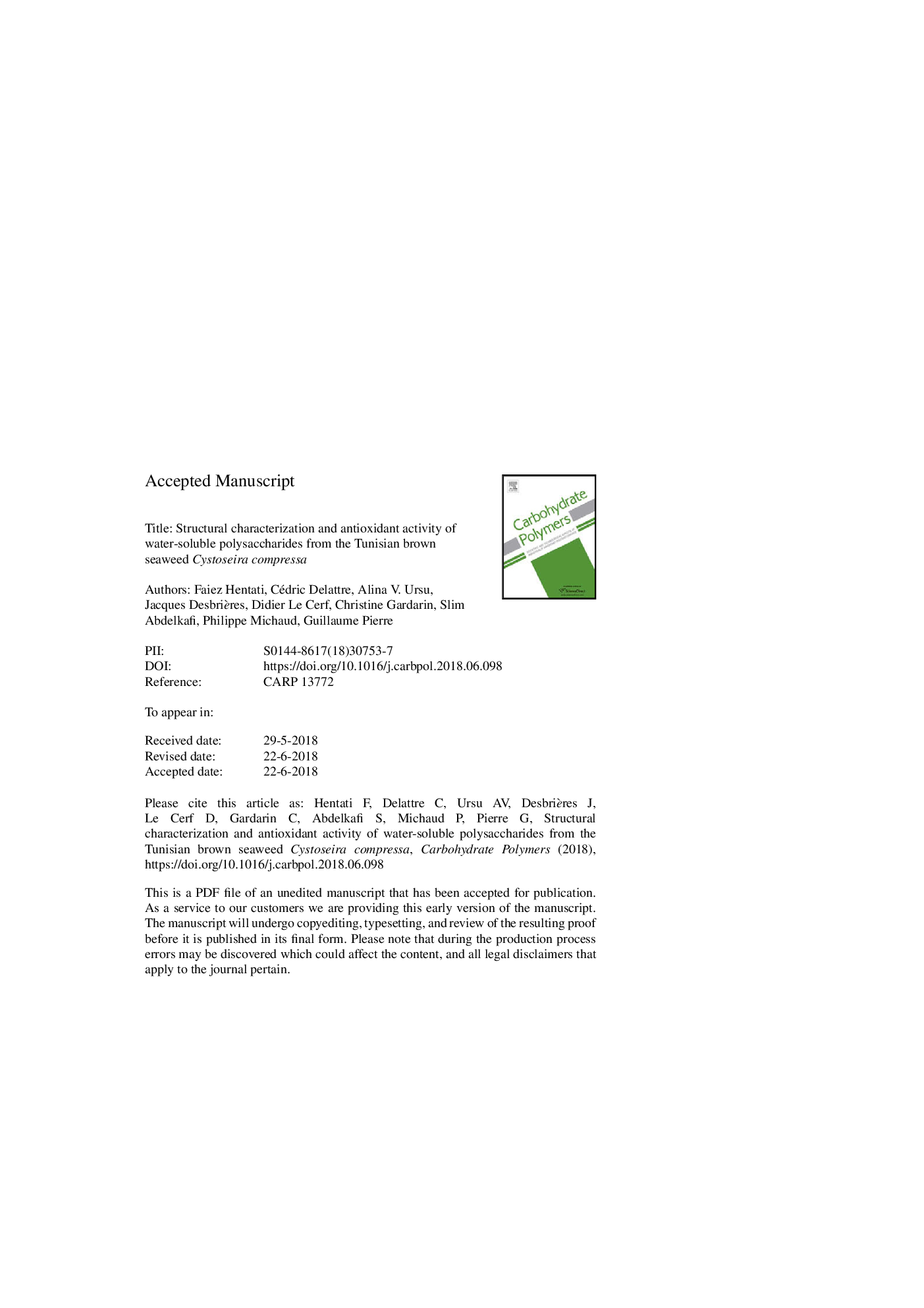| Article ID | Journal | Published Year | Pages | File Type |
|---|---|---|---|---|
| 7781589 | Carbohydrate Polymers | 2018 | 46 Pages |
Abstract
A fucoidan (CCF) and a sodium alginate (CCSA) were extracted and purified from the Tunisian brown seaweed Cystoseira compressa. CCF was a highly sulfated heterogalactofucan composed of α-(1â3), α-(1â4)-linked l-Fucp as main backbone which could be highly branched (31.84%) at O-3 and O-4 positions of α-(1â4)-l-Fucp and α-(1â3)-l-Fucp by terminal monosaccharides and side chains such as terminal α-l-Fucp, terminal β-d-Galp, β-d-Galp-(1â3)-α-l-Fucp and β-d-Galp-(1â4)-α-l-Fucp. The ratio of α-(1â3)/α-(1â4) linkages was estimated at 3.86:1. CCSA was characterized by HPAEC-PAD, GC/MS-EI, ATR-FTIR, and 1H-NMR. The M/G ratio was M/Gâ¯=â¯0.77, indicating that CCSA respectively contained 44% and 56% of mannuronic and guluronic acids. The values of FGG, FMM, FGM (or FMG) blocks as well as the parameter η were estimated. The two polysaccharides exhibited effective antioxidant activities by ferrous ion chelation, ferric ion reduction and DPPH radical-scavenging, outlining their potentials as natural additives.
Related Topics
Physical Sciences and Engineering
Chemistry
Organic Chemistry
Authors
Faiez Hentati, Cédric Delattre, Alina V. Ursu, Jacques Desbrières, Didier Le Cerf, Christine Gardarin, Slim Abdelkafi, Philippe Michaud, Guillaume Pierre,
